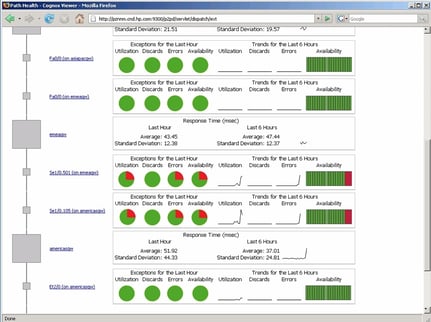Single-vendor networks have been the industry standard for far too long. Gartner’s article debunks the myth of the single-vendor's superiority. Gartner gathered information from hundreds of client interactions and performed detailed interviews of nine organizations that introduced a second vendor into their single-vendor network. Gartner found evidence that the introduction of a second vendor into your Cisco or any single-vendor network is far more beneficial than previous thought.
Debunking Popular Myths

Introducing a new vendor means more expenses; additional staff, initial capital costs, and ongoing maintenance.
Truth: None of the participants in the study required increased staffing or increased labor budget to help manage the dual-vendor network. Gartner also found that the dual-vendor network diminished total initial costs and noted more ongoing maintenance expenses for Cisco-only networks. Multiple and dual vendors are more capable of providing comprehensive-lifetime warranties and site license maintenance that take into consideration the economies of scale when servicing high volume products within an infrastructure, which considerably reduce maintenance compared to a single-vendor network.
My IT staff has already been accredited as a Cisco Certified Internet Expert (CCIE). Introducing a second vendor will require expensive training of my already skilled talent.
Truth: Transferring Cisco skills to other vendors’ products is relatively simple. Cisco trained or not, the majority of knowledge is based on network technology and is transferable from vendor to vendor. Many vendors will provide delta training. Most organizations invested three to five days for incremental training but found that their team required less time and picked up the information without difficulty. The one-time incremental cost is 1% to 2%.
Introduction of a second vendor will cause interoperability. Two vendors’ products in a network won’t work reliably together.
Truth: Gartner found interoperability to be a very minor issue for all organizations interviewed. Simple practices keep vendors performing together smoothly.
-
Use standards as much as possible, especially interfaces between building blocks within the networks1.
-
Reduce interface points to a minimum.
-
Regularly engage in network (hygiene) activities, ensuring the proprietary protocols are reduced or eliminated from the network.
-
Perform proof-of-concept testing when introducing the new technology into your network, regardless of products from an incumbent or new vendor.
If I introduce a second vendor then I will have to purchase an abundance of management tools.
Truth: Gartner found that second network vendors often offered their element management system for free and included training to familiarize the staff with the new tools. Nearly every network management team interviewed by Gartner used a variety of industry-standard, vendor-independent SNMP tools prior to adopting a second vendor, requiring no additional investment with implementation of a second vendor. Vendor-neutral network management tools prevent the lock-in and limited alternatives of single-vendor management tools.
Tools included in Gartner Research:
- CA Spectrum
-
Dartware InterMapper
-
EMC Ionix (Smarts)
-
HP Network Node Manager
-
Ipswitch WhatsUp Gold
-
MRTG
-
Paessler PRTG
-
Solarwinds Orion
-
Statseeker

VLCM has the right solution to meet your specific network needs.VLCM is a certified partner of HP and HP networking. When you team up with VLCM, you’ll benefit from proven services and products. Please contact us for more information.
Sources: Gartner Research, ID Number: G00208758; Debunking the Myth of the Single-Vendor Network1

